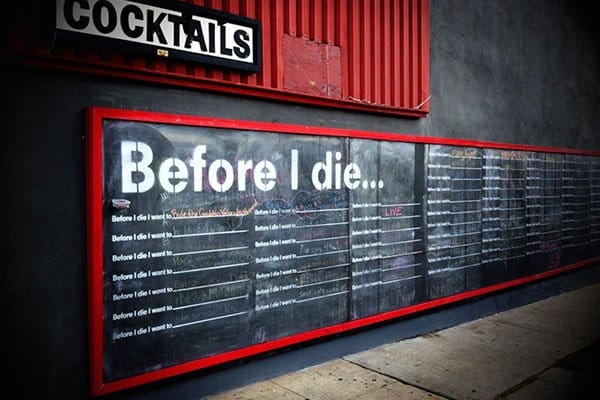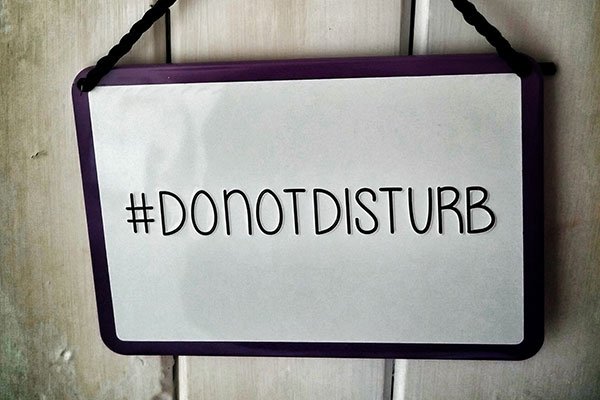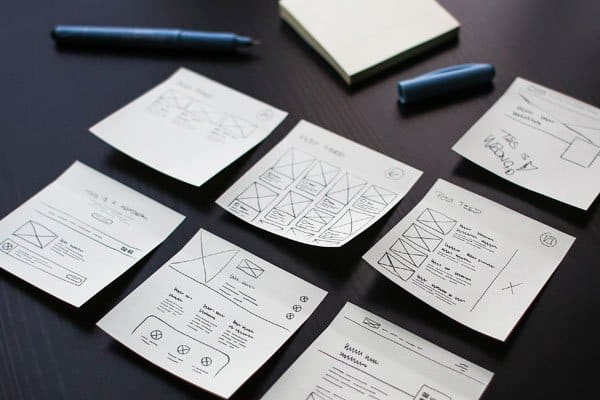10 Time Management Tips to Improve Innovation
Design and innovation are one of the fields that require a long time for investigation and brainstorming in order to formulate a new creative idea and evaluate its viability in the market and suitability for the consumer. According to design thinking process models, the investigation and ideation phases are almost 50% of the process that ensures that the final product can solve a specific problem or add a value to the customer. As a result of this, executives and project managers tend to avoid innovation due its high risk, lengthy time and high cost.
On the other hand, designers believe that brainstorming and market research are essential in order to have a clear vision about the user demographic and needs. Therefore, designers should focus on the quality of the time they spend thinking of new ideas rather than focusing on quantity and striving to increase the time dedicated to brainstorming, considering that most projects are already run according to tight schedules. Time management can provide a solution for designers by allowing them to focus on each design process, which may contribute to building innovative solutions.
While there are many time management tips, there are core tips that can dramatically increase productivity during the design time. They address common mistakes that we as designers commit every day. The time management tips for designers include the following:
Tip 1: Create a To-Do List for Every Day in Your Life
To-Do lists help you to organize your task and avoid forgetting your daily duties. Some tasks can be planned on a weekly basis and others can be planned on a daily basis. At the start of every week, you need to create a To-Do list of the tasks that need to be accomplished during the week. Then, each morning, the first thing to do is the write a To-Do list of the tasks that need to accomplished before the end of the day.
To-Do lists help you to identify your capabilities and the amount of work that can be handled during the day. Each day, there are commonly one or two large tasks as well as a number of small tasks that need to be fulfilled. Before leaving work, you need to identify the finished and unfinished tasks which will be transferred to the following (or some other) day.

Many tools can be used to help you to build a To-Do list including normal pen and paper and mobile applications that can help you to write or update your tasks during your way to work (e.g. the Reminders app which can be downloaded from App store).
Tip 2: Prioritize and Schedule Your Tasks
The tasks in the To-Do list should be prioritized based on their urgency and importance. Usually, designers waste a long time of their valuable time doing tasks that don’t increase productivity such as answering emails, replying to feedback, or even watching the world news. It is important to put the high priority tasks at the top of the To-Do list. Then, list the other tasks in descending order of priority, and complete the tasks according to this order – highest priority first and lowest priority last.
Most of the To-Do apps allow you to drag tasks and events to rearrange them, which can help arranging tasks. Priorities may change during the day based on the project’s flow and progress. Therefore, the To-Do list needs to be updated to reflect these changes.
Every task in the To-Do list should have a time to start and an expected duration. Each task timeline varies based on the task length and its nature. For example, some tasks can take days of continuous work while others can be repeated on a daily basis. The length of each task should be considered in order to set reasonable number of tasks to accomplish every day. Also, assigning small tasks during the idle time of large tasks can help getting the most out of the time.
Tip 3: Manage Distraction Smartly
Distractions can be frequent email checking, chatting with co-workers, or frequent useless meetings. They can waste a lot of your time, especially when they just pop-up during the important task that needs your focus, such as designing or prototyping. The danger of distractions is that they don’t only waste your time while you focus on them, but also that you will need time to refocus on the main task.
Imagine you check your email 10 times per day, and each time takes around 10 minutes, which means that you waste around 2 hours per day checking emails (without taking into consideration the time needed to reply messages). One of the time management tips that can help you to avoid distractions is to manage meeting time, mail checking, and chat time. For example, you can make a rule to only check your inbox 2-3 times per day. This can reduce the time wasted in mail correspondences. Another tip is to schedule email replies based on their priority. Some emails require a reply immediately while others can wait until the end of the day.

Chatting, meetings and social networking are another distractions that can prohibit you from focusing on productive tasks. They can be solved by setting a duration and schedule for meetings or even by questioning if the meeting is necessary. Also, set a time for chatting with your peers and checking your social network profiles. This can help save even more hours of your day.
Tip 4: Don’t Reinvent the Wheel
Many tasks have actually been done before. One of best practices for better time management is to look for a previous experience and to use it again, instead of doing it from scratch. For example, instead of doing primary research about specific user needs, designers can depend on secondary research results done by other companies or researchers to save time and cost.
Designers can also depend on templates or ready elements that were done before instead of doing it from scratch. For example, instead of building a whole list of website development tasks, designers can depend on Content Management Systems (CMSs) if possible. Depending on research literature or templates has its own drawbacks because it is not always exactly what is required, but it can serve as a starting point to save time, cost, and effort.
Tip 5: Procrastinating
Another mistake that affects designers’ time management is procrastination, or putting off tasks. For example, the design can delay the task multiple times until the deadline is approached. While it can seem like you are simply focusing on another task, and leaving the original task for a later time, your brain keeps thinking of the original task as the deadline approaches. In order to avoid putting off tasks, you need to set daily deadlines or milestones for the tasks instead of weekly or monthly ones. By achieving small parts of the task on a daily basis, you avoid turning this task into another distracting failure.
In addition to the procrastination problem, one useful time management tip is to reject projects when possible, so that you can focus on the most important projects. It is hard to reject projects, especially when working as a freelancer, but it helps you to maintain a high quality in your work. If you believe that the project is very important, you may try to delay its start until you plate is free of the other projects.
Tip 6: Avoid Multitasking
Developing a new creative idea is a challenging task and take a massive metal effort that needs the full focus of the human brain. While many designers think they can multitask different projects at the same time, the human brain is not designed to perform multiple tasks. Instead, the brain switches very quickly from one task to the other, which affects the final quality of each task or project. Therefore, it is important to focus on one task at a time and then to switch to the other task in a linear thinking model.
Tip 7: Focus on High-Value Tasks First, Delegate When Possible
Part of time management is evaluating different tasks and understanding which one is the most important for your career and life. While some tasks may seem important in the short run, it may be considered a waste of time if you consider it in the context of your whole career. Estimating the right value of each task will help you to determine which to keep in your pocket and which to eliminate. Another related time management tip is delegating tasks when possible. If there someone who can do your task while giving you the time to focus on more challenging tasks, it would help you achieve more, as you can use this assistance to achieve your goals faster than ever.
Tip 8: Target Good Work Rather Than Great Work
Many designers believe that all great ideas were created great from the start point. This misperception prevents them from moving forward in their career, as they spend a long time, a lot of effort, and cost trying to focus on insignificant tasks to reach perfection. Large innovative companies such as IKEA, Lego, and Apple reached a high level of creativity and innovation based on a successful design process that aims, through a continuous iterative process, to improve their products over time. Therefore, you need to focus on doing good work that meets with the client requirement, and then target to repeat this process when possible. This will help you to save time for other projects and ensure that the projects are delivered by their estimated deadlines.
Tip 9: Visualize Your Ideas
In the early stage of creative idea development, most designers think about and describe ideas in a written form. This may lead to time wastage in ideas that aren’t viable. Instead, most design thinking processes suggest visualizing ideas, as our brains are designed to easily understand and link ideas when they are visualized. Using techniques such as mind mapping and brainstorming can help you to easily focus on different ideas, and to choose one with a high potential for success.

Tip 10: Take a Break, Stay Healthy
This is one of the common time management tips, as our brain may get drained because of the long hours of work and thinking of new ideas. Additionally, the health of the human body has a strong impact on the brain’s activities. Although working out many be perceived as a waste of time, it is actually an investment in your body and health that will contribute to your success in future projects.
These time management tips can help designers to focus more time and effort on the creative process without affecting the whole project timeline. While it is hard to convince a project manager to change the project timeline to give more time for innovation and thinking of new ideas, it is viable to follow the tips listed above to save hours from your daily work. Each of these tips will help save time in your day. While some tips focus on scheduling or organizing tasks, others focus on how to handle design tasks and visualizing ideas to ensure accurate analysis of the ideas in the project.






